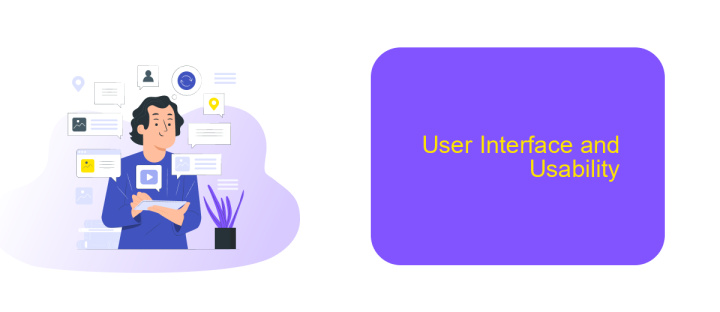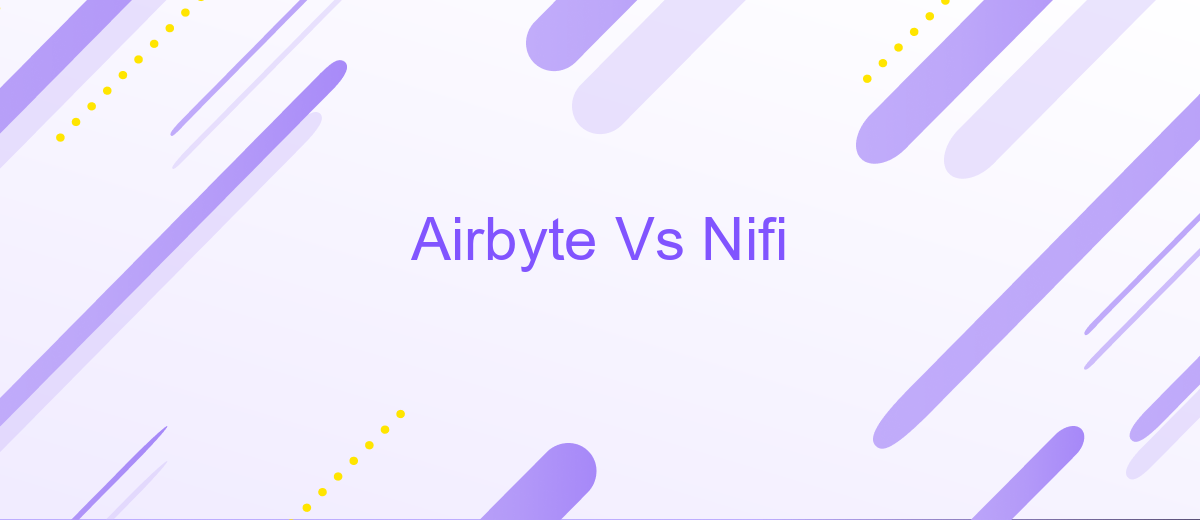Airbyte Vs Nifi
When it comes to data integration and ETL (Extract, Transform, Load) processes, choosing the right tool can be daunting. Airbyte and Apache NiFi are two popular options, each with its own strengths and weaknesses. This article delves into a detailed comparison of Airbyte and NiFi, examining their features, performance, and suitability for various data tasks to help you make an informed decision.
Introduction
In the rapidly evolving landscape of data integration, choosing the right tool can significantly impact your organization's efficiency and data management capabilities. Airbyte and NiFi are two prominent players in this field, each offering unique features and advantages. Understanding their differences and strengths can help you make an informed decision tailored to your specific needs.
- Airbyte: An open-source data integration platform known for its flexibility and extensive connector library.
- NiFi: A robust data ingestion tool from Apache, designed for data flow automation and real-time data streaming.
- ApiX-Drive: A versatile integration service that simplifies the process of connecting various applications and automating workflows.
This article will delve into the core functionalities, use cases, and performance aspects of Airbyte and NiFi. By comparing these tools, we aim to provide a comprehensive guide to help you determine which solution aligns best with your data integration requirements. Whether you are a small startup or a large enterprise, understanding these tools will empower you to optimize your data workflows effectively.
Feature Comparison

When comparing Airbyte and NiFi, one of the most significant differences lies in their approach to data integration. Airbyte offers a modern, modular platform with a focus on ease of use and extensibility. It supports a wide array of connectors and allows users to create custom connectors with minimal coding. Additionally, Airbyte's open-source nature encourages community contributions, ensuring a continuously growing ecosystem. NiFi, on the other hand, is known for its robust data flow management capabilities. It provides a highly configurable and scalable environment, ideal for complex data routing, transformation, and system mediation tasks.
Another key feature to consider is the user interface and overall user experience. Airbyte's UI is designed to be user-friendly, making it accessible even to those with limited technical expertise. This contrasts with NiFi's interface, which, while powerful, can be more complex and may require a steeper learning curve. For businesses looking to streamline their integration processes, services like ApiX-Drive can be invaluable. ApiX-Drive offers a no-code solution for connecting various apps and services, complementing tools like Airbyte and NiFi by simplifying the integration setup and management.
Architecture and Scalability

When comparing Airbyte and Nifi, their architecture and scalability are critical factors to consider. Airbyte employs a modular architecture where connectors can be easily added or removed. This makes it highly adaptable to different data sources and destinations. Nifi, on the other hand, uses a flow-based programming model, which is highly visual and allows for complex data workflows to be created and managed with ease.
- Airbyte's modular architecture allows for seamless integration of new connectors, making it scalable for growing data needs.
- Nifi's flow-based model offers a visual interface for designing and managing data pipelines, which can be scaled horizontally by adding more nodes.
- Both platforms support distributed architectures, enabling them to handle large volumes of data efficiently.
For organizations looking for additional integration capabilities, services like ApiX-Drive can be beneficial. ApiX-Drive simplifies the process of connecting various applications and automating workflows, complementing the scalability offered by both Airbyte and Nifi. This makes it easier to manage and scale data integration tasks as business needs evolve.
User Interface and Usability

Airbyte and Nifi offer distinct user experiences tailored to their respective audiences. Airbyte's interface is designed with simplicity in mind, making it accessible for users with varying levels of technical expertise. The dashboard is intuitive, with clear navigation and straightforward setup processes, allowing users to quickly establish data pipelines without extensive training.
In contrast, Nifi provides a more complex interface that caters to advanced users and data engineers. The platform offers a detailed visual representation of data flows, enabling users to design intricate workflows with precision. However, this complexity can be overwhelming for beginners, requiring a steeper learning curve.
- Airbyte: User-friendly, clean interface, easy setup
- Nifi: Advanced features, detailed visual flows, steep learning curve
For those seeking to streamline integration setups, services like ApiX-Drive can be beneficial. ApiX-Drive offers a user-friendly platform for connecting various applications, simplifying the integration process. This can complement the use of both Airbyte and Nifi by providing an additional layer of usability and efficiency.
Integration Options and Ecosystem
Airbyte offers a robust ecosystem for data integration, supporting a wide array of connectors that facilitate seamless data movement across various platforms. Its open-source nature allows developers to create custom connectors, ensuring flexibility and adaptability to specific business needs. Additionally, Airbyte’s integration with third-party services like ApiX-Drive enhances its capabilities, enabling users to automate workflows and streamline data processes effortlessly.
On the other hand, Apache NiFi provides a comprehensive suite of integration options through its extensive library of processors. These processors enable users to build complex data flows with minimal coding, making it accessible for both technical and non-technical users. NiFi’s ecosystem is further strengthened by its strong community support and regular updates, ensuring it remains a reliable choice for data integration. While both platforms offer unique advantages, the choice between Airbyte and NiFi ultimately depends on specific project requirements and user preferences.
- Automate the work of an online store or landing
- Empower through integration
- Don't spend money on programmers and integrators
- Save time by automating routine tasks
FAQ
What are the primary differences between Airbyte and NiFi?
Which tool is better for real-time data processing?
How easy is it to set up and use Airbyte and NiFi?
Can both Airbyte and NiFi be integrated with third-party services for automation?
Which tool offers better scalability for large data volumes?
Strive to take your business to the next level, achieve your goals faster and more efficiently? Apix-Drive is your reliable assistant for these tasks. An online service and application connector will help you automate key business processes and get rid of the routine. You and your employees will free up time for important core tasks. Try Apix-Drive features for free to see the effectiveness of the online connector for yourself.


